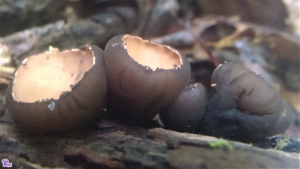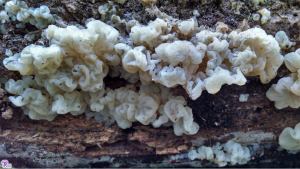#026: Pseudogymnoascus destructans
The fungus Pseudogymnoascus destructans is the causal agent of White-Nose Syndrome (WNS) of bats. WNS is most destructive to bats during the winter. Its primary effect on bats is to change their behavior during winter. Bats with WNS are observed to wake up frequently, fly around during the day, and cluster near the entrances to their hibernacula during the time that they should be hibernating. This extra activity kills bats in two ways. For one, they could either freeze to death while flying around outside. Alternatively, the extra activity could deplete their fat reserves and the bats could starve to death.







![#011: Characteristics of Kingdom Fungi [Archived]](https://www.fungusfactfriday.com/wp-content/themes/hueman/assets/front/img/thumb-small-empty.png)


